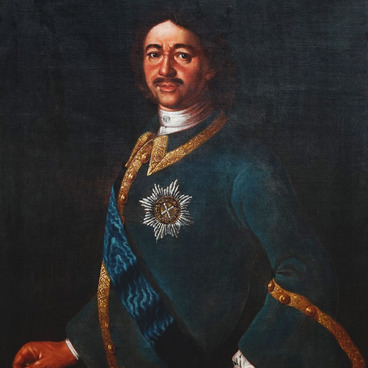The sculpture of the commander Alexander Suvorov (1730–1800) is a maquette of the monument that was planned to be installed in Moscow. The maquette of the future monument is made from plaster. Even in this small sculpture, the author manages to convey the character of the victorious field marshal.
The sculpture was created by the outstanding master Anatoly Posyado in 1979. Anatoly Posyado was an animal sculptor and the most prominent Soviet-era creator of equestrian monuments. His works are often compared to those of Peter Clodt and Eugene Lanceray. He worked in all sculpture genres and used different materials: stone, wood, metal, and ceramics.
Anatoly Posyado was born into a military family in Kaluga on September 22, 1908. Posyado took up the profession that became his calling quite late in life.
He relocated to Moscow in 1922, and started studying at the Art Studio of the Artists' Union in 1934. And only in 1937, at the age of thirty, Posyado enrolled at the Moscow State Art Institute. He was taught by such outstanding Russian sculptors as Vladimir Domogatsky and Leonid Sherwood.
A talented student found talented teachers. The teachers helped lay the foundation of the novice sculptor’s creative biography. From the first days of his studies, Posyado showed himself as a mature master: everyone recognized his exceptional talent in depicting horses.
His studies were interrupted by war. During the Great Patriotic War, Posyado joined the creative team of Dmitry Moor, the author of the famous propaganda poster saying “Have you volunteered?” In the victorious 1945, Posado brilliantly defended his thesis, presenting to the commission a statue of Alexander Nevsky on horseback.
The sculpture of Suvorov is displayed in the Ramenskoye History and Art Museum for a reason. The name of the great commander is inextricably linked to the Talyzin family, which owned the Denezhnikovo estate in the Bronnitsy District. Stepan Talyzin served under the command of the renowned Russian general Alexander Suvorov, where he enjoyed the attention of the field marshal.
Suvorov visited the Denezhnikovo estate more than once. In 1795, he became the god-son of Stepan Talyzin. Subsequently, the commander’s godson, Alexander, married Suvorov’s granddaughter, Olga Zubova (1803–1882).
The sculpture was created by the outstanding master Anatoly Posyado in 1979. Anatoly Posyado was an animal sculptor and the most prominent Soviet-era creator of equestrian monuments. His works are often compared to those of Peter Clodt and Eugene Lanceray. He worked in all sculpture genres and used different materials: stone, wood, metal, and ceramics.
Anatoly Posyado was born into a military family in Kaluga on September 22, 1908. Posyado took up the profession that became his calling quite late in life.
He relocated to Moscow in 1922, and started studying at the Art Studio of the Artists' Union in 1934. And only in 1937, at the age of thirty, Posyado enrolled at the Moscow State Art Institute. He was taught by such outstanding Russian sculptors as Vladimir Domogatsky and Leonid Sherwood.
A talented student found talented teachers. The teachers helped lay the foundation of the novice sculptor’s creative biography. From the first days of his studies, Posyado showed himself as a mature master: everyone recognized his exceptional talent in depicting horses.
His studies were interrupted by war. During the Great Patriotic War, Posyado joined the creative team of Dmitry Moor, the author of the famous propaganda poster saying “Have you volunteered?” In the victorious 1945, Posado brilliantly defended his thesis, presenting to the commission a statue of Alexander Nevsky on horseback.
The sculpture of Suvorov is displayed in the Ramenskoye History and Art Museum for a reason. The name of the great commander is inextricably linked to the Talyzin family, which owned the Denezhnikovo estate in the Bronnitsy District. Stepan Talyzin served under the command of the renowned Russian general Alexander Suvorov, where he enjoyed the attention of the field marshal.
Suvorov visited the Denezhnikovo estate more than once. In 1795, he became the god-son of Stepan Talyzin. Subsequently, the commander’s godson, Alexander, married Suvorov’s granddaughter, Olga Zubova (1803–1882).


